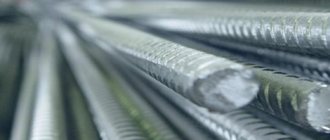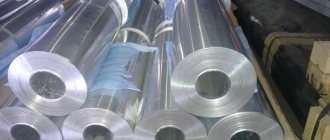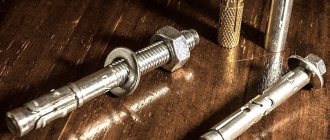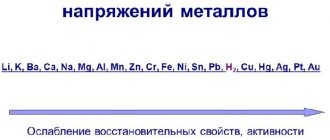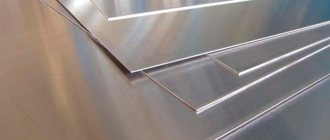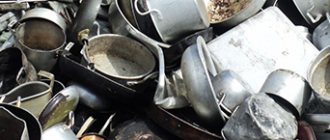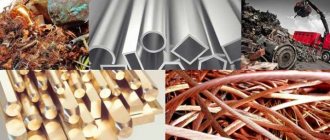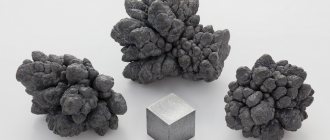What are mechanical properties?
The mechanical properties of aluminum, like other materials, are properties that are associated with the elastic and inelastic response of the material to the application of a load to it, including the relationship between stress and strain. Examples of mechanical properties are:
- modulus of elasticity (tensile, compressive, shear)
- tensile strength (tensile, compressive, shear)
- yield strength
- fatigue limit
- elongation (relative) at break
- hardness.
Mechanical properties are often mistakenly referred to as physical properties.
The mechanical properties of materials, including aluminum and its alloys, that are obtained by tensile testing of the material, such as tensile modulus, tensile strength, tensile yield strength and elongation, are called tensile mechanical properties.
ALUMINUM ALLOYS
ALUMINUM ALLOYS, aluminum-based alloys; have low density (up to 3000 kg/m3), high electrical and thermal conductivity, corrosion resistance and specific strength. The first A. s. – alloys of aluminum with silicon, obtained in the 50s. 19th century, had low strength and low corrosion resistance. A turning point in the history of the development of A. with. steel research by A. Wilm (Germany, 1903–11), who discovered in hardened aluminum containing copper and magnesium an increase in strength during the aging process, the so-called. aging effect (see Aging of metals). In 1921, A. Pach (USA) modified the Al–Si alloy by introducing a microscope into it. doses of Na, which led to mean. improving its properties. Later, to obtain A. s. with certain properties they began to use alloying decomp. metals (Cu, Mg, Mn, Si, Zn, Ni, Li, Be, etc.). In Russia in the 1930s–40s. development of A. s. and their introduction into production was carried out by Yu. G. Muzalevsky, S. M. Voronov, I. N. Fridlyander and others.
Until the 1940s Ch. arr. alloys based on the systems Al – Si (silumins), Al – Mg (magnaliums), Al – Cu – Mg (duralumins), Al – Mg – Si (avials). Subsequently, high-strength (based on the systems Al – Zn – Mg, Al – Zn – Mg – Cu, Al – Mg – Si – Cu), heat-resistant (Al – Cu – Mn, Al – Mg – Li, Al – Cu – Mg – Fe – Ni), low density (Al – Be – Mg, Al – Mg – Li, Al – Cu – Li), etc. A.S. Depending on the method of production of semi-finished products and A. products. They are divided into deformable, used for the production of sheets, plates, profiles, pipes, forgings, wire by deformation (rolling, forging, stamping, etc.), and foundry - for the production of shaped products by casting. The composition and some properties of the most common A. s. are given in tables 1, 2 (see page 578).
Wrought alloys in terms of production volume are approx. 80% of all A. s. Chemical and phase composition, thermal regimes. processing of deformable a.s. determined by the need to obtain optimal operating complex and technological properties. Alloys of the Al - Mg system (magnalium) have high corrosion resistance, are well welded, but are not thermally hardened. processing; Sc is added to these alloys to increase strength. Al – Zn – Mg alloys have high strength, are well welded, but at the same time... concentrations of Zn and Mg are prone to delayed corrosion cracking. Al – Mg – Si (avial) alloys combine good corrosion resistance with a pronounced aging effect; amenable to anodizing. Al – Mg – Si – Cu alloys are greatly strengthened as a result of aging, but are characterized by reduced corrosion resistance. Al – Cu – Mg alloys (duralumins) have avg. strength, but high ductility and fracture toughness, low rate of development of fatigue cracks. Al – Zn – Mg – Cu alloys are characterized by the highest strength and yield strength. Al – Mg – Li alloys have the same mechanical properties as duralumin. properties, but lower (by 11%) density and higher elastic modulus. Al – Be – Mg alloys have high specific strength and elasticity modulus, good corrosion resistance, ductility, and good weldability, but due to toxicity their use is limited. Semi-finished products from deformed aluminum s. For subsequent processing, they are obtained from ingots of simple shape - round, flat, hollow.
Table 1. Chemical composition and mechanical properties of some wrought aluminum alloys
| System | Alloy grade | Alloying components (% by weight) | Typical mechanical properties | |||||
| Cu | Mg | Mn | Si | Others | Tensile strength, MPa | Yield strength, MPa | ||
| Al–Mg (magnalia) | AMg6 | < 0,1 | 5,8–6,8 | 0,5–0,8 | ≤ 0,4 | Zn < 0.2; Fe ≤ 0.4 | 340 | 170 |
| 1570 | < 0,1 | 5,3–6,3 | 0,2–0,6 | ≤ 0,2 | Zn < 0.1; Fe ≤ 0.3; Sc 0.25 | 410 | 310 | |
| Al – Mg – Si (aircraft) | AB | 0,1–0,5 | 0,45–0,9 | 0,15–0,35 | 0,5–1,12 | Zn < 0.2; Fe ≤ 0.5; Ti <0.15 | 340 | 280 |
| ADZZ | 0,15–0,4 | 0,8–1,2 | < 0,15 | 0,4–0,8 | Zn < 0.25; Fe ≤ 0.7 | 320 | 260 | |
| Al – Mg – Si – Cu | AK6 | 1,8–2,6 | 0,4–0,8 | 0,4–0,8 | 0,7–1,2 | Zn < 0.3; Fe ≤ 0.7 | 390 | 300 |
| AK8 | 3,9–4,8 | 0,4–0,8 | 0,4–1,0 | 0,6–1,2 | Zn < 0.3; Fe ≤ 0.7 | 470 | 380 | |
| AI – Cu – Mg (duralumins) | D1h | 3,8–4,8 | 0,4–0,8 | 0,4–0,8 | <0,5 | Fe < 0.4 | 380 | 220 |
| D16h | 3,8–4,9 | 1,2–1,8 | 0,3–0,9 | <0,2 | Fe<0.3 | 440 | 300 | |
| Al – Zn – Mg – Cu | V96TS | 2,0–2,6 | 2,3–3,0 | – | <0,3 | Zn 3.0–8.0; Fe < 0.4; Zr 0.1–0.2 | 650 | 620 |
| 1933 | 0,8–1,2 | 1,6–2,2 | – | <0,1 | Zn 6.35–7.2; Fe 0.06–0.15; Zr 0.1–0.18 | 510 | 460 | |
| Al – Cu – Mg – Fe – Ni | AK4–1 | 1,9–2,7 | 1,2–1,8 | ≤ 0,2 | «0,3 | Zn ≤ 0.3; Fe 0.8–1.4; Ni 0.8-1.4 | 420 | 350 |
| Al – Cu – Mn | 1201 | 5,8–6,8 | < 0,02 | 0,2–0,4 | <0,2 | Zn <0.1; Fe ≤ 0.3 | 420 | 320 |
| Al – Mg – Li | 1420 | < 0,05 | 4,5-6,0 | – | <0,15 | Fe ≤ 0.2; Li 1.8–2.3; Zr 0.08–0.15; Na < 0.03 | 430 | 290 |
| 1424 | – | 4,7–5,2 | 0,05–0,25 | ≤ 0,1 | Zn 0.4–0.8; Fe ≤ 0.1; Li 1.5–1.8 | 460 | 320 | |
| Al – Be – Mg | ABM-1 | – | 4,2–5,5 | 0,3 | 0,1 | Fe 0.2; Be 28-32; Ni 0.1 | 430–500 | 250-300 |
| ABM-3 | – | 1,5–2,5 | 0,2 | Fe 0.2; Be 67–72 | 550–620 | 380-480 | ||
| Note. Small additions of Cr, Zr, Sc, Ti, Be, Ca are introduced into a number of alloys. | ||||||||
To deformable A. s. Also include sintered alloys (instead of an ingot, a briquette sintered from powders is used to form products): sintered aluminum powder (SAP) and sintered aluminum alloys (SAS). SAP, strengthened with dispersed particles of aluminum oxide, is superior to all aluminum oxides. by heat resistance. SAS doped with Si, Fe, Ni have a very low coefficient. linear expansion.
Table 2. Chemical composition and mechanical properties of some cast aluminum alloys
| Alloying components (% by weight) | Typical mechanical properties | ||||||||
| System | Alloy grade | Cu | Mg | Mn | Si | Others | Tensile strength, MPa | Yield strength, MPa | |
| Silumins | Al–Si | AK12 (AL2) | 0,6 | – | 0,5 | 13,0 | – | 200 | 110 |
| Al–Si–Mg | AK9ch (AL4) | 0,3 | 0,17–0,3 | 0,2-0,5 | 8,0–10,5 | – | 260 | 200 | |
| AK7ch (AL 9) | 0,2 | 0,2–0,4 | 0,5 | 6,0–8,0 | – | 230 | 130 | ||
| Al–Si–Cu–Mg | AK5M (AL5) | 1,0–1,5 | 0,35–0,6 | 0,5 | 4,5–5,5 | – | 240 | 180 | |
| AK8M3ch (VAL8) | 2,5–3,5 | 0,2–0,45 | – | 7,0–8,5 | Zn 0.5–1.0; Ti 0.1–0.25; B 0.005–0.1; Be 0.05–0.25 | 345 | 290 | ||
| Al–Mg | AMg10 (AL27) | – | 9,5–10,5 | – | – | Zr 0.05–0.20; Ti 0.05–0.15; Be 0.05–0.15 | 314 | 176 | |
| AMg6l (AL23) | 0,15 | 6,0–7,0 | – | – | Zr 0.05–0.20; Ti 0.05–0.15; Be 0.02–0.1 | 225 | 127 | ||
| Al–Cu | AM5 (AL19) | 4,5–5,3 | 0,05 | 0,6–1,0 | 0,3 | Ti 0.15–0.35 | 370 | 260 | |
| AM4.5Kd (VAL10) | 4,5–5,1 | 0,05 | 0,35–0,8 | – | Ti 0.15–0.35; Cd 0.07–0.25 | 420 | 300 | ||
For casting alloys, such characteristics as high fluidity and low tendency to form shrinkage and gas voids, cracks, and cavities are especially important. The highest characteristics are achieved when casting in metal. forms (in a mold, under pressure, during liquid stamping). The most important foundry a.s. – silumins – contain St. 4.5% Si, these include alloys of the Al – Si system and more complex systems: Al – Si – Mg, Al – Si – Cu – Mg; have good casting properties, good corrosion resistance, cf. strength, no shrinkage porosity is formed in castings. Alloys containing Mg St. 5% (alloys of the Al – Mg, Al – Mg – Si systems with the addition of Mn, Be and Ti) are corrosion-resistant, high-strength, highly ductile and have a low density. Prolonged low-temperature (60–80 °C) heating leads to a deterioration in the corrosion resistance of foundry a.s. with high Mg content. The manufacturing technology of these alloys is complex; products are cast. arr. into earthen forms. Alloys with Cu content St. 4% (alloys of the Al – Cu, Al – Cu – Mn systems with the addition of Ti, Cd) are superior in heat resistance to other casting alloys, but have reduced corrosion resistance and casting properties. Casting alloys (except for silumins) are in principle similar to wrought alloys of the corresponding systems, but differ in a higher content of alloying components (Cu, Mg), additives (Ni, Ti) and impurities (Fe).
In addition to the casting methods, the properties of cast alloys are also influenced by the components included in their composition, which are alloying for some alloys, but have a harmful effect on others: Si reduces the strength of Al – Mg alloys; Zn impurity worsens the mechanical properties. properties of Al – Si and Al – Cu alloys; Sn and Pb, even in tenths of a percent, significantly reduce the melting temperature of alloys. Fe has a harmful effect on silumins, causing the formation of brittle inclusions that crystallize in the form of plates. The Fe content depends on the casting method: it is maximum when casting under pressure and in a mold and minimal when casting into the ground. The quality of shaped castings from aluminum s. significantly increases when using a pure charge (reducing the amount of harmful metallic and non-metallic impurities in alloys), modifying alloys (introducing small additives Ti, Zr, Be), using progressive methods of refining and thermal treatment. processing.
A. s. are among the most important structures. materials. In terms of scale of production and consumption, they occupy 2nd place after steel; in industry they use approx. 55 marks A. s. Thanks to the unique exploitation. properties are widely used: in aircraft and rocket production - landing gear, propeller blades, power elements fly. apparatus (skin, fuselage, frames, spars, ribs, upper and lower planes of wings), rocket bodies, fuel and oil tanks; in shipbuilding - ship hulls, deck superstructures, miscellaneous. ship equipment; in the automotive industry - engine parts (pistons, heads, cylinder blocks), cooling radiators, heaters, cabins, bus interiors, tanks for transporting chemicals. and petrochemical products, bulk cargo; in construction - builds. structures, window frames and doors; in the food industry - cans for beer, water, food products, household foil, etc.
Elastic modulus
The modulus of elasticity, often called Young's modulus, is the ratio of the stress that is applied to a material to the corresponding strain in the range where they are directly proportional to each other.
There are three types of stresses and, accordingly, three types of elastic moduli for any material, including aluminum:
- tensile modulus of elasticity
- compressive modulus of elasticity
- shear modulus of elasticity (shear modulus of elasticity).
Table - Tensile elastic moduli of aluminum and other metals [1]
Yield strength
The stress required to achieve a specified small plastic deformation in aluminum or other material under uniaxial tensile or compressive load.
If the plastic deformation under tensile load is specified as 0.2%, then the term “yield strength 0.2%” (Rp0.2) is used.
Figure 4 – Typical stress-strain diagram for aluminum alloys
Aluminum alloys for aluminum profiles
Russian SP 128.13330.2012 (updated SNiP 2.03.06-85) prescribes the following deformable aluminum alloys for use in building aluminum profiles: AD31, 6060, 6063, AD33, AB, 1915, 1925, V95.
Eurocode 9 uses alloys 5083, 5454, 5754, 6060, 6061, 6063, 6005A, 6106, 6082, 7020 for aluminum profiles.
Russian SP 128.13330.2012 and European Eurocode 9 “intersect” on alloys 6060, 6063, AD33 (6082) and, partially, on alloys 1915 and 1925 (7020).
Note that Eurocode 9 does not use high-strength alloys such as 7075 (analogous to alloy B95). In addition, Eurocode recommends three alloys of the Al-Mg series (5xxx) for aluminum profiles. SP 128.13330.2012 does not contain such alloys for profiles.
Elongation (at break)
Often called "relative elongation". An increase in the distance between two marks on a test specimen that occurs as a result of the specimen deforming under tension until it breaks between the marks.
The amount of elongation depends on the cross-sectional dimensions of the sample. For example, the amount of elongation that is obtained when testing an aluminum sheet specimen will be lower for a thin sheet than for a thick sheet. The same applies to extruded aluminum profiles.
Figure 5 – Influence of alloying elements on strength properties and relative elongation [4]
Extension A
Percentage elongation after specimen rupture at an initial mark spacing of 5.65 √ S0, where S0 is the initial cross-sectional area of the test specimen. The outdated designation of this quantity A5 is currently not used. A similar value in Russian-language documents is designated δ5.
It is easy to check that for round samples this distance between the original marks is calculated as 5·d.
Extension A50mm
The percentage elongation after specimen rupture, relative to the original length between the 50 mm marks and the constant original width of the test specimen (typically 12.5 mm). In the USA, a distance between marks of 2 inches is used, that is, 50.8 mm.
Aluminum alloy 6060
- Has a minimum magnesium content of 0.35%, and silicon - 0.30%
- "Diluted" version of alloy 6063
- In T6 condition it provides pressed profiles (up to 3 mm thick) with a minimum strength of 190 MPa
- Easily pressed even with very complex profile cross-sections.
- It is well shaped, for example, flexible, in T4 condition - after hardening and natural aging.
- They are used in windows, doors, facades, as well as in the manufacture of handrails, fences, furniture, and sports equipment.
- Well suited for anodizing – protective and decorative.
Aluminum alloys 6063 and AD31
- The minimum content of magnesium is 0.45%, and silicon - 0.20%
- The increased minimum of magnesium provides higher strength than alloy 6060: in T6 condition - up to 215 MPa
- The increased magnesium content reduces the pressing speed: by 15-20% compared to alloy 6060
- The scope of application is the same as that of alloy 6060, except for complex and thin-walled profiles, when it is recommended to use alloy 6060.
Shear strength
The maximum specific stress, that is, the maximum load divided by the original cross-sectional area that a material can withstand when tested in shear. Shear strength is usually about 60% of tensile strength.
Shear strength is an important quality characteristic of rivets, including aluminum ones.
Figure 6 – Compressive strength, shear strength, load-bearing strength and hardness of various aluminum alloys [4]
Conditions of aluminum alloys
The level of mechanical properties of any aluminum alloy is determined by two main factors:
- the chemical composition of the alloy, that is, the percentage content of both alloying elements and impurities;
- the state of the alloy, that is, the treatment that the alloy received during the manufacturing process of the finished aluminum product, deformation and thermal.
For conditions that are achieved mainly by heat treatment, the designation consists of a capital letter T and one or more numbers, for example, T66.
For states that are achieved by deformation processing, designations are used that consist of the capital letter H and one or more numbers, for example, H14.
Hardness
The resistance of a metal to plastic deformation, usually measured by making an impression.
Brinell Hardness (HB)
Penetration resistance of a spherical indenter under standardized conditions.
For aluminum and aluminum alloys, the hardness of NV is approximately equal to 0.3 Rm, where Rm is the tensile strength expressed in MPa [2].
If a tungsten carbide indenter is used, the designation HBW is used.
Vickers Hardness (HV)
Penetration resistance of a square pyramid diamond indenter under standardized conditions. Hardness HV is approximately equal to 1.10·HB [2].
Aluminum and aluminum alloys
Aluminum as a structural material is rarely used in its pure form.
Small amounts (sometimes less than 1%) of other elements can significantly change its properties, physical and mechanical. One of the main properties of structural metals is their strength. Unalloyed aluminum has a tensile strength of about 90 MPa. Due to strain hardening (hardening), this value can increase to 200 MPa. However, the addition of small amounts of zinc, copper and magnesium to pure aluminum makes it a high-strength aluminum alloy with a tensile strength of more than 550 MPa. Aluminum alloys are divided into two categories: wrought and cast. Wrought alloys are processed into a given shape by deformation (extrusion, rolling, forging, stamping, drawing). Casting alloys are poured into casting molds.
Fatigue
The tendency of a metal to fail under prolonged cyclic stress that is well below its tensile strength.
Figure 7 – Difference in fatigue behavior of low-carbon steel and aluminum alloys [3]
Fatigue strength
The maximum stress amplitude that a product can withstand for a given number of loading cycles. Typically expressed as the stress amplitude that gives a 50% probability of failure after a given number of loading cycles [2].
Fatigue endurance
The limiting stress below which a material will withstand a specified number of stress cycles [2].
Aging of aluminum alloys: natural and artificial
Typically, natural aging begins immediately after hardening at a relatively high rate, which then gradually decreases (Figure 2). Depending on the alloy, it may take several weeks to reach the T4 state, such as for alloy 6060 with a minimum of magnesium and silicon content. For alloy 6063, which has the highest magnesium and silicon content, this process is virtually complete within about a week.
Figure 2 – Aging of aluminum alloys (not to scale) [3]
Some time after hardening - several hours or days, depending on the alloy and production conditions - the profiles that must be artificially aged are placed in an aging oven. A typical artificial aging regime for profiles made of alloy 6060 is heating to a temperature of 180 ºC and holding for 5 hours to achieve T6, as well as T5 or T66 conditions. At the same time, they try to get to the maximum strength on the aging curve.
With longer aging, the strength of the profiles decreases and then the result is overaged
condition T7.
This condition provides increased electrical conductivity. With a shorter exposure, the material receives an under-aged
state, for example, T64.
